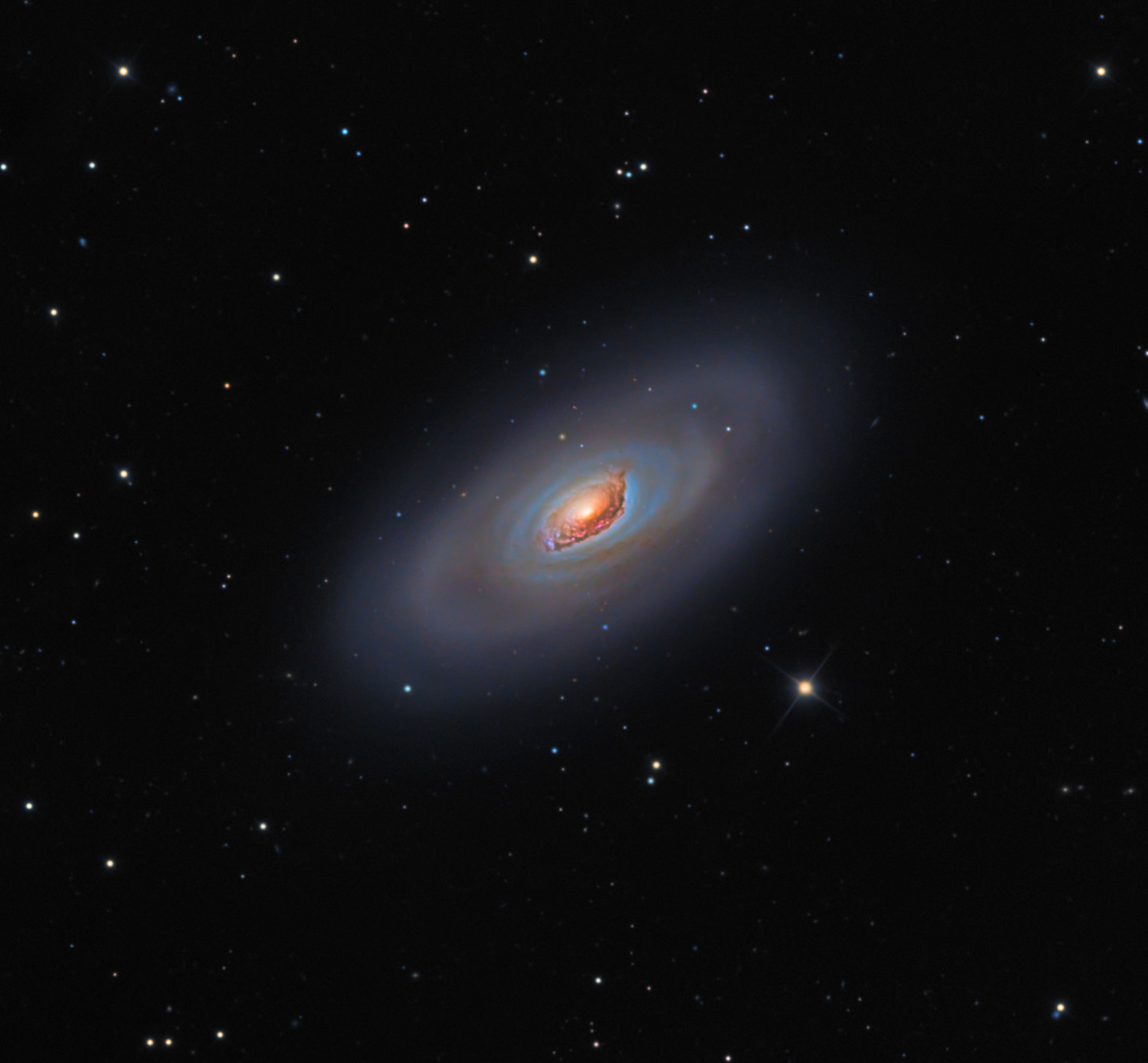
M64
Michael Miller, Jimmy Walker/NasaThe MGU catalog includes every galaxy known to science. They are located within a radius greater than 30 billion light-years from our planet.
The catalog details 800 thousand galaxies, their stellar composition and brightness in the electromagnetic spectrum - from ultraviolet to infrared. According to the researchers, the project was made possible thanks to big data.
The publicly available work is called the Reference Catalog of Galaxy SEDs. Its analysis of emission lines and their shapes is more detailed and accurate than any other, say the scientists.
So far, the information collected pertains only to galaxies that are close (by cosmological standards), i.e. those with a red shift (a displacement in the spectral lines towards longer wavelengths when moving away from the observer) of no more than 0.3. There is less information about the early Universe. However, the astronomers plan to add a further 300-400 galaxies in the near future.
 Rose, UGC 1810 and UGC 1813 / Nasa, EsaThe disc of the galaxy UGC 1810 in the constellation of Andromeda is visibly deformed by tidal forces emanating from the rose-shaped neighboring UGC 1813. The necklace of blue diamonds at the top is formed from clusters of hot, bright young stars.
Rose, UGC 1810 and UGC 1813 / Nasa, EsaThe disc of the galaxy UGC 1810 in the constellation of Andromeda is visibly deformed by tidal forces emanating from the rose-shaped neighboring UGC 1813. The necklace of blue diamonds at the top is formed from clusters of hot, bright young stars.
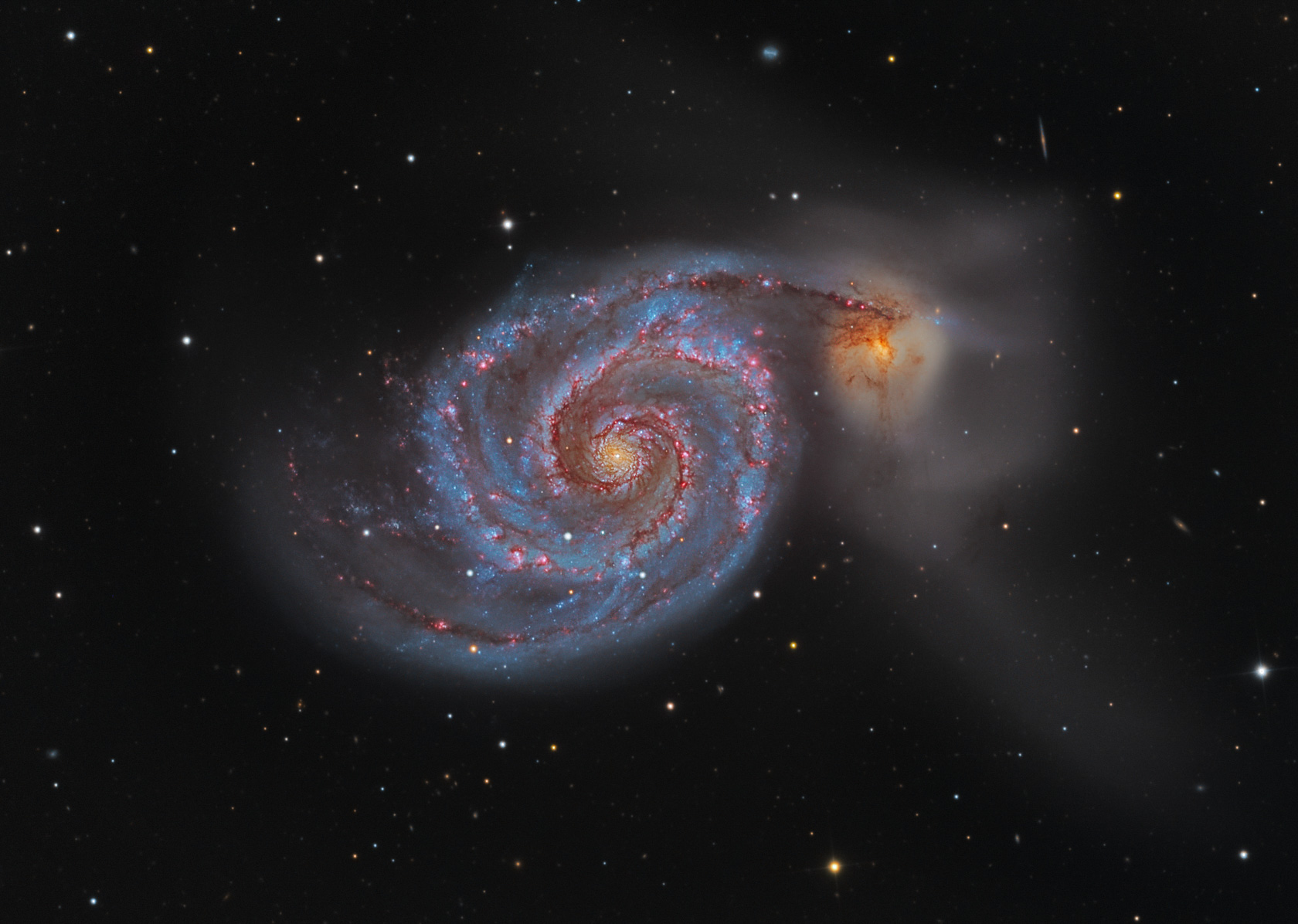 The Whirlpool Galaxy, M51 / Martin Pugh/NASAThis galaxy is very close to its companion NGC 5195. Due to the swirling spiral, it appears as if the main galaxy M51 is pulling all the matter towards itself, turning the other into a blurry lump and giving the impression of a whirlpool.
The Whirlpool Galaxy, M51 / Martin Pugh/NASAThis galaxy is very close to its companion NGC 5195. Due to the swirling spiral, it appears as if the main galaxy M51 is pulling all the matter towards itself, turning the other into a blurry lump and giving the impression of a whirlpool.
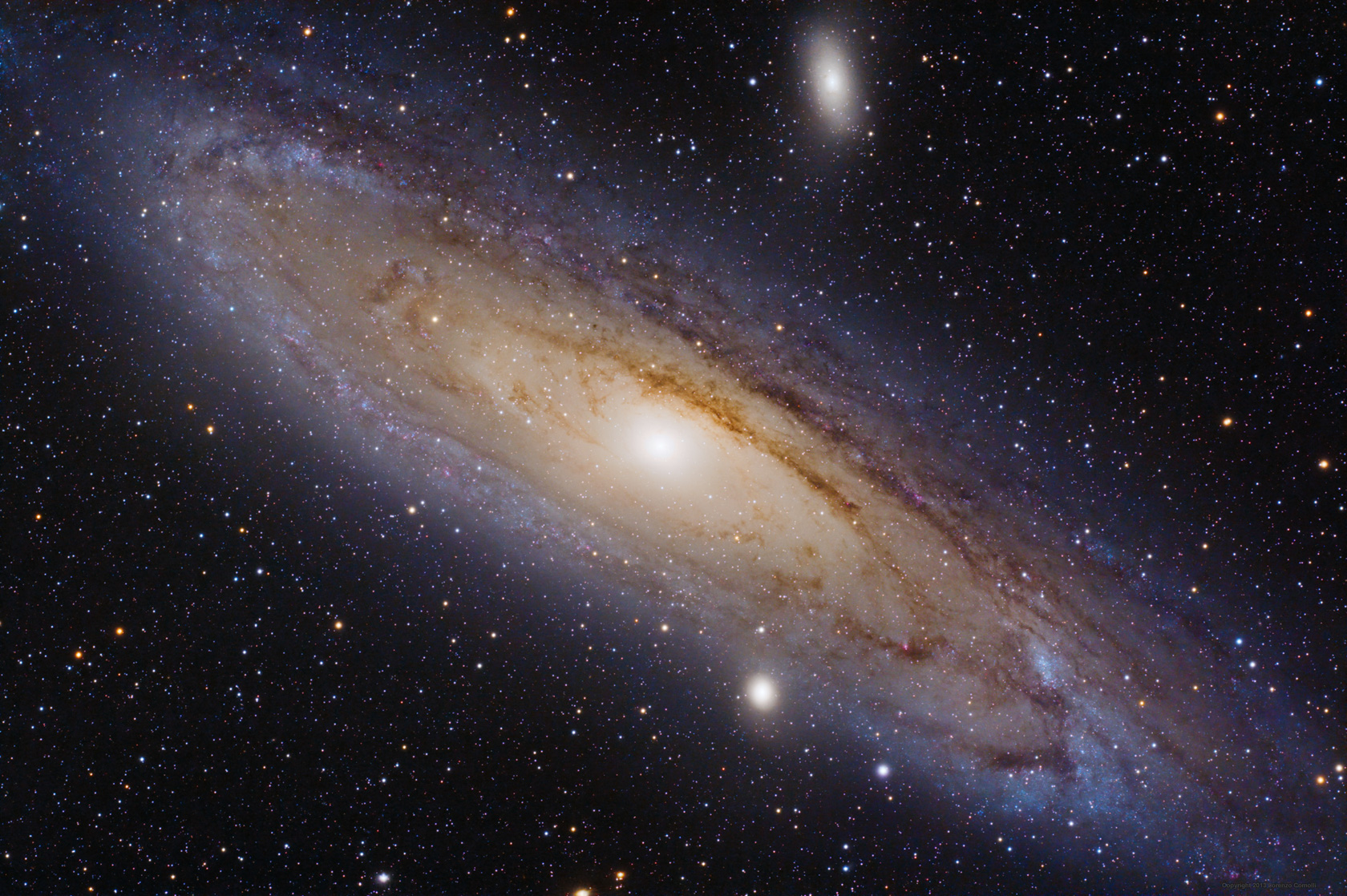 Andromeda, M31 / Lorenzo Comolli/Nasa
Andromeda, M31 / Lorenzo Comolli/Nasa
This huge galaxy is one of the closest to Earth and is visible to the naked eye. Scientists believe that in a couple of billion years it will crash into the Milky Way and swallow it up.
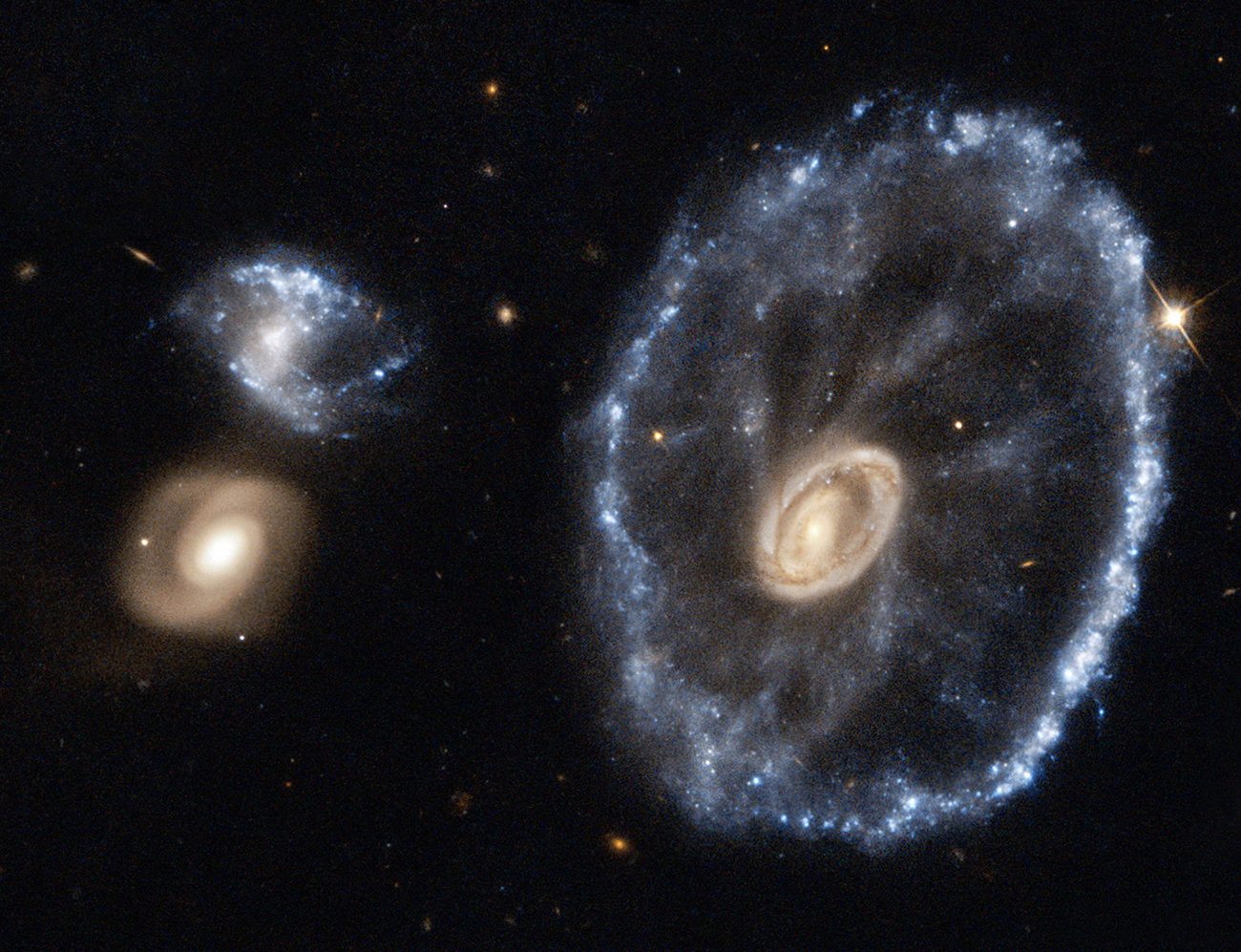 Cartwheel Galaxy / ESA, NASA, HubbleThis galaxy is said to have undergone a head-on collision with another about 200 million years ago, causing a powerful shock wave. Star formations appeared around the central part.
Cartwheel Galaxy / ESA, NASA, HubbleThis galaxy is said to have undergone a head-on collision with another about 200 million years ago, causing a powerful shock wave. Star formations appeared around the central part.
 M64 / Michael Miller, Jimmy Walker/NasaThe structure of this galaxy contains prominent dust lanes concealing stars behind.
M64 / Michael Miller, Jimmy Walker/NasaThe structure of this galaxy contains prominent dust lanes concealing stars behind.
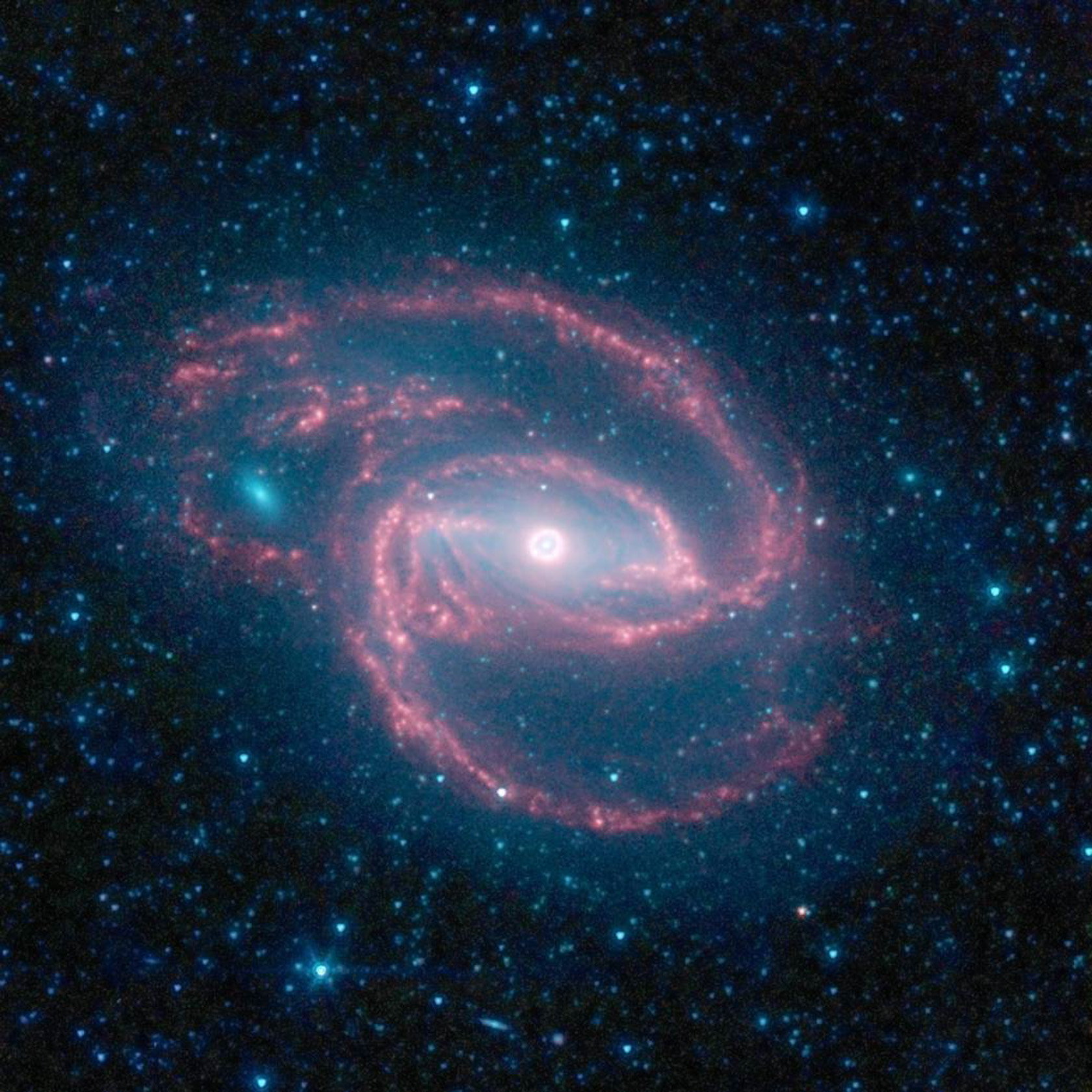 Ring galaxy Hoag's Object / NASA/JPL-CaltechThe first ring galaxy to be discovered. There is no consensus regarding the processes that formed such objects. According to one hypothesis, they were formed as a result of one galaxy passing through the disc of another.
Ring galaxy Hoag's Object / NASA/JPL-CaltechThe first ring galaxy to be discovered. There is no consensus regarding the processes that formed such objects. According to one hypothesis, they were formed as a result of one galaxy passing through the disc of another.
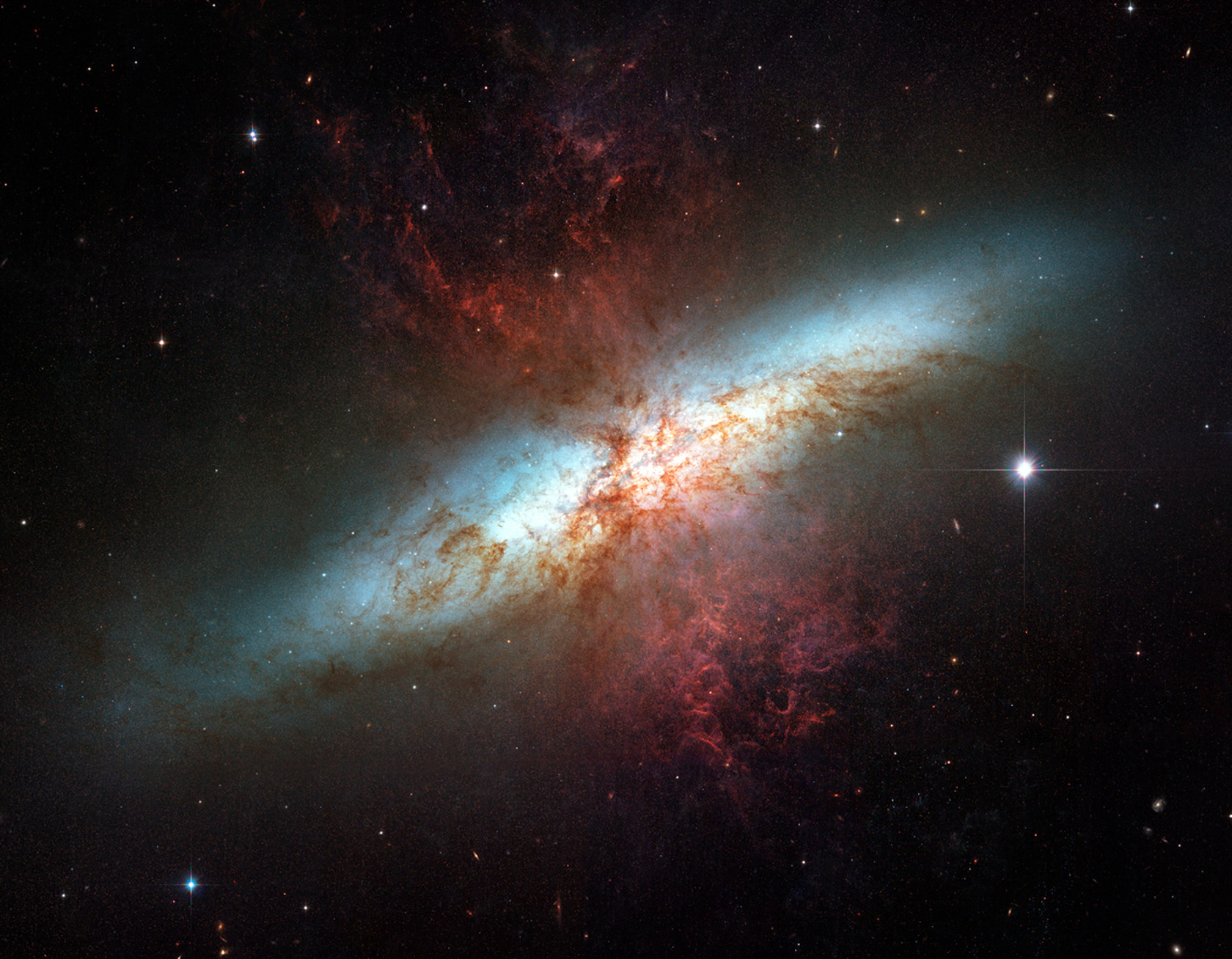 M82 / NASA, ESAThis galaxy is adjacent to our own Milky Way, and also consists of spiral arms.
M82 / NASA, ESAThis galaxy is adjacent to our own Milky Way, and also consists of spiral arms.
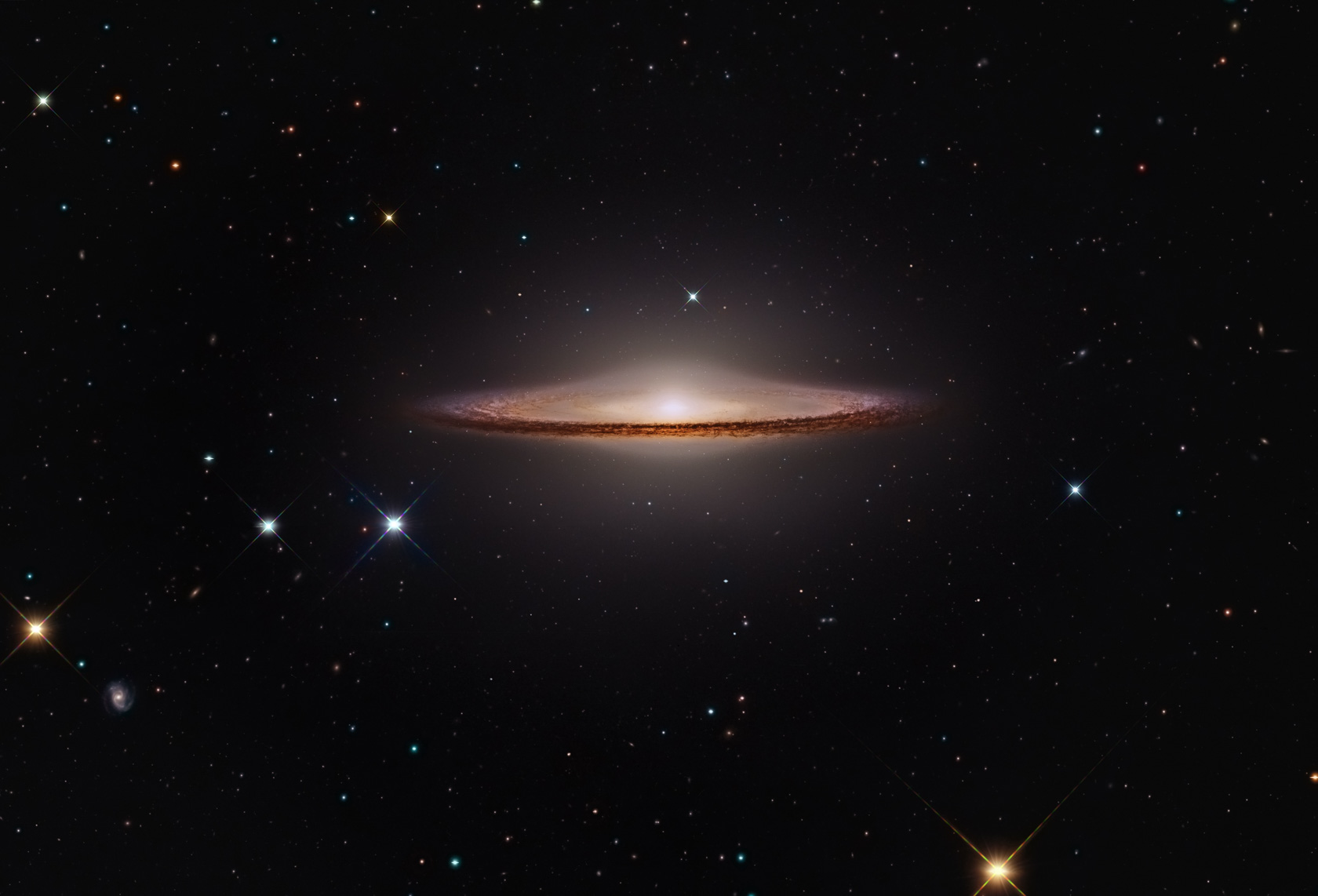 The Sombrero Galaxy (M104 or NGC 4594) / Giovanni Paglioli/NASAThe Sombrero Galaxy is so named because its dark dust lane gives it the appearance of a sombrero — a wide-brimmed Mexican hat.
The Sombrero Galaxy (M104 or NGC 4594) / Giovanni Paglioli/NASAThe Sombrero Galaxy is so named because its dark dust lane gives it the appearance of a sombrero — a wide-brimmed Mexican hat.
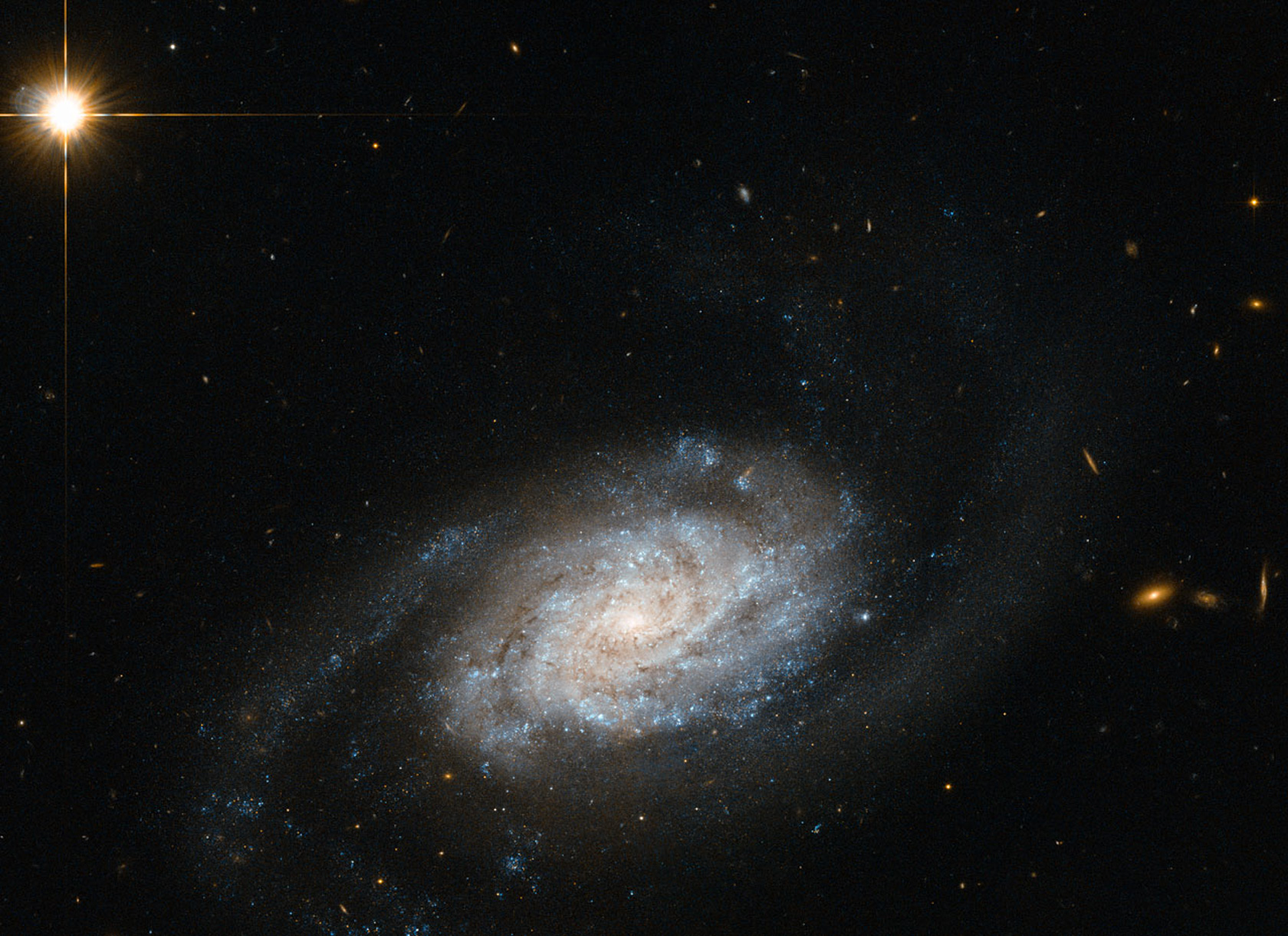 Galaxy NGC 3370 / Nasa, EsaIn late 1994 a star inside this galaxy exploded with such force that it momentarily eclipsed billions of other celestial bodies. Light from the explosion reached Earth.
Galaxy NGC 3370 / Nasa, EsaIn late 1994 a star inside this galaxy exploded with such force that it momentarily eclipsed billions of other celestial bodies. Light from the explosion reached Earth.
If using any of Russia Beyond's content, partly or in full, always provide an active hyperlink to the original material.
Subscribe
to our newsletter!
Get the week's best stories straight to your inbox